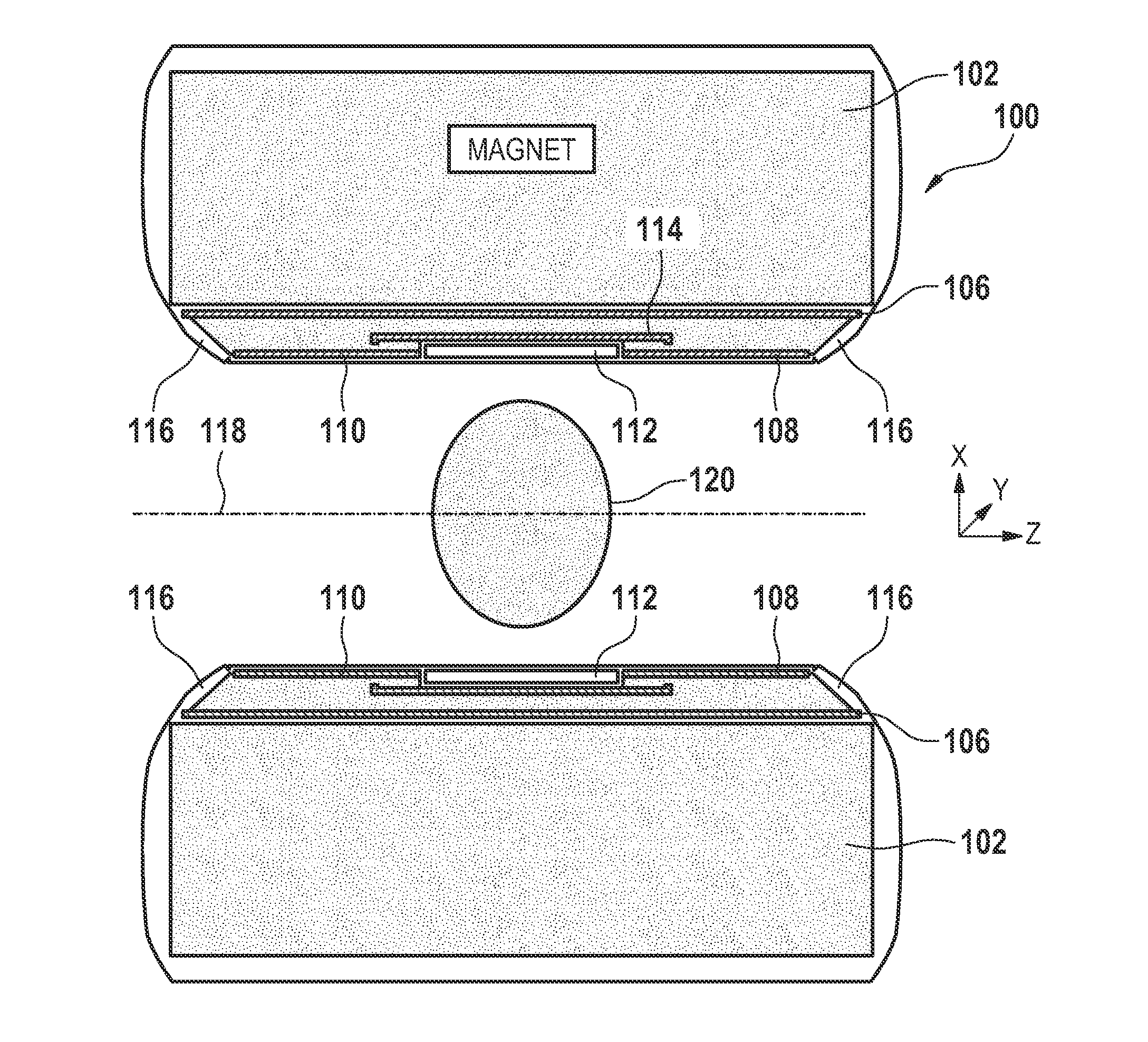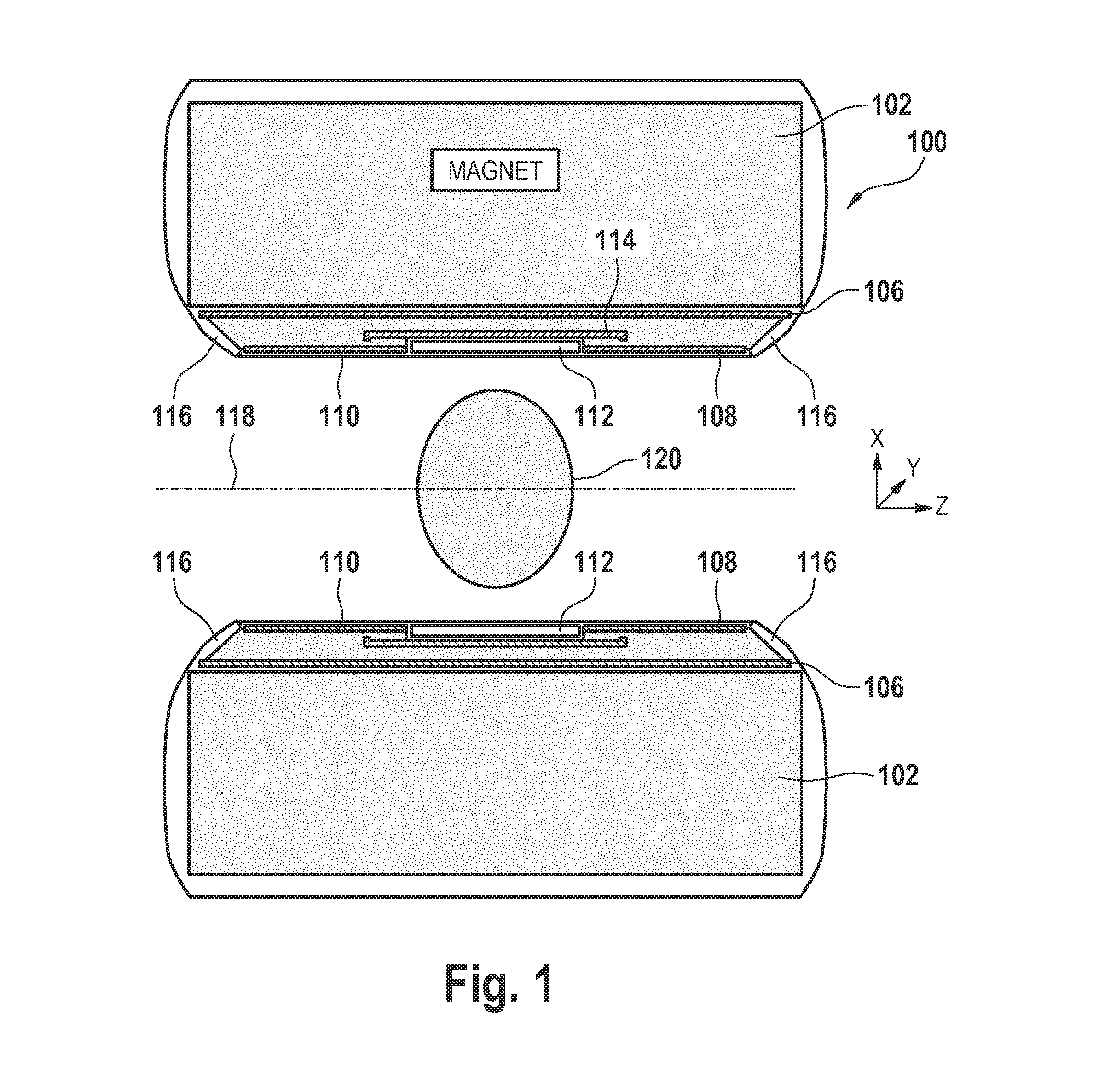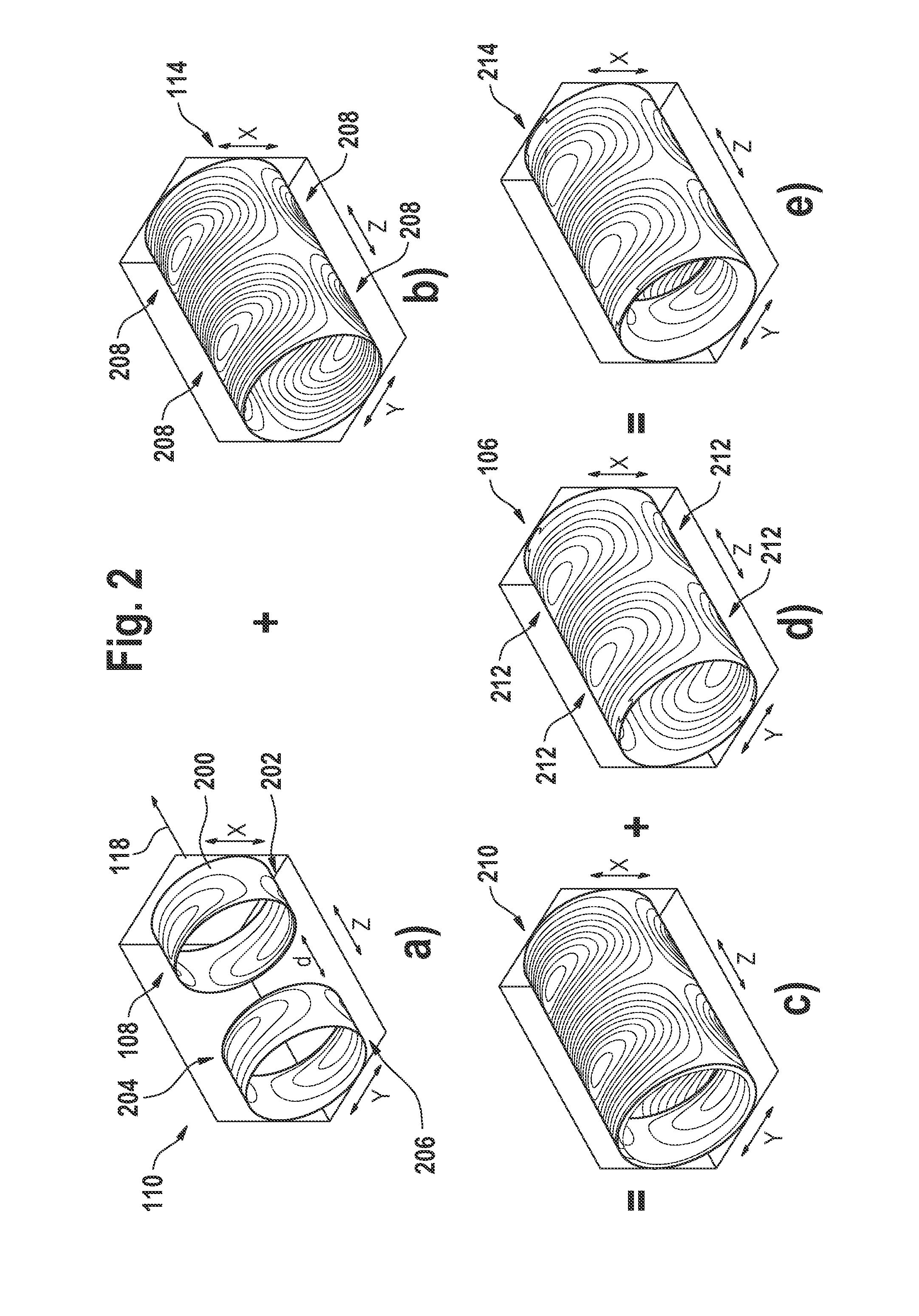Magnetic resonance imaging system with satellite gradient coils
a magnetic resonance imaging and gradient coil technology, applied in the field of magnetic resonance imaging systems, can solve the problems of increasing the required input power, the cost of gradient amplifier driving, and the inability to make a trade-off between cost and patient space available,
- Summary
- Abstract
- Description
- Claims
- Application Information
AI Technical Summary
Benefits of technology
Problems solved by technology
Method used
Image
Examples
Embodiment Construction
[0028]In the following, similar elements are depicted by the same reference numerals. Further, in the following it is assumed that without loss of generality two satellite coils are used in a symmetric manner. However, the basic principle underlying the invention can also be used with only one single satellite coil and an inner coil.
[0029]FIG. 1 is a schematic of a cross section of an MR system 100 comprising a main magnet 102 and a gradient coil system. In the following, MR system is understood as the structural arrangement comprising a support which carries the main magnet 102 with its magnet bore, carries the gradient coils, as well as optionally various kinds of electronics like amplifiers, filters, reception coils 112.
[0030]As can be seen in FIG. 1, the MR system 100 comprises a main magnet 102, which is adapted for generating a homogeneous main magnetic field B0 within an imaging volume 120 the magnet bore, wherein an object to be imaged is to be placed at least within the ima...
PUM
 Login to View More
Login to View More Abstract
Description
Claims
Application Information
 Login to View More
Login to View More - R&D
- Intellectual Property
- Life Sciences
- Materials
- Tech Scout
- Unparalleled Data Quality
- Higher Quality Content
- 60% Fewer Hallucinations
Browse by: Latest US Patents, China's latest patents, Technical Efficacy Thesaurus, Application Domain, Technology Topic, Popular Technical Reports.
© 2025 PatSnap. All rights reserved.Legal|Privacy policy|Modern Slavery Act Transparency Statement|Sitemap|About US| Contact US: help@patsnap.com



